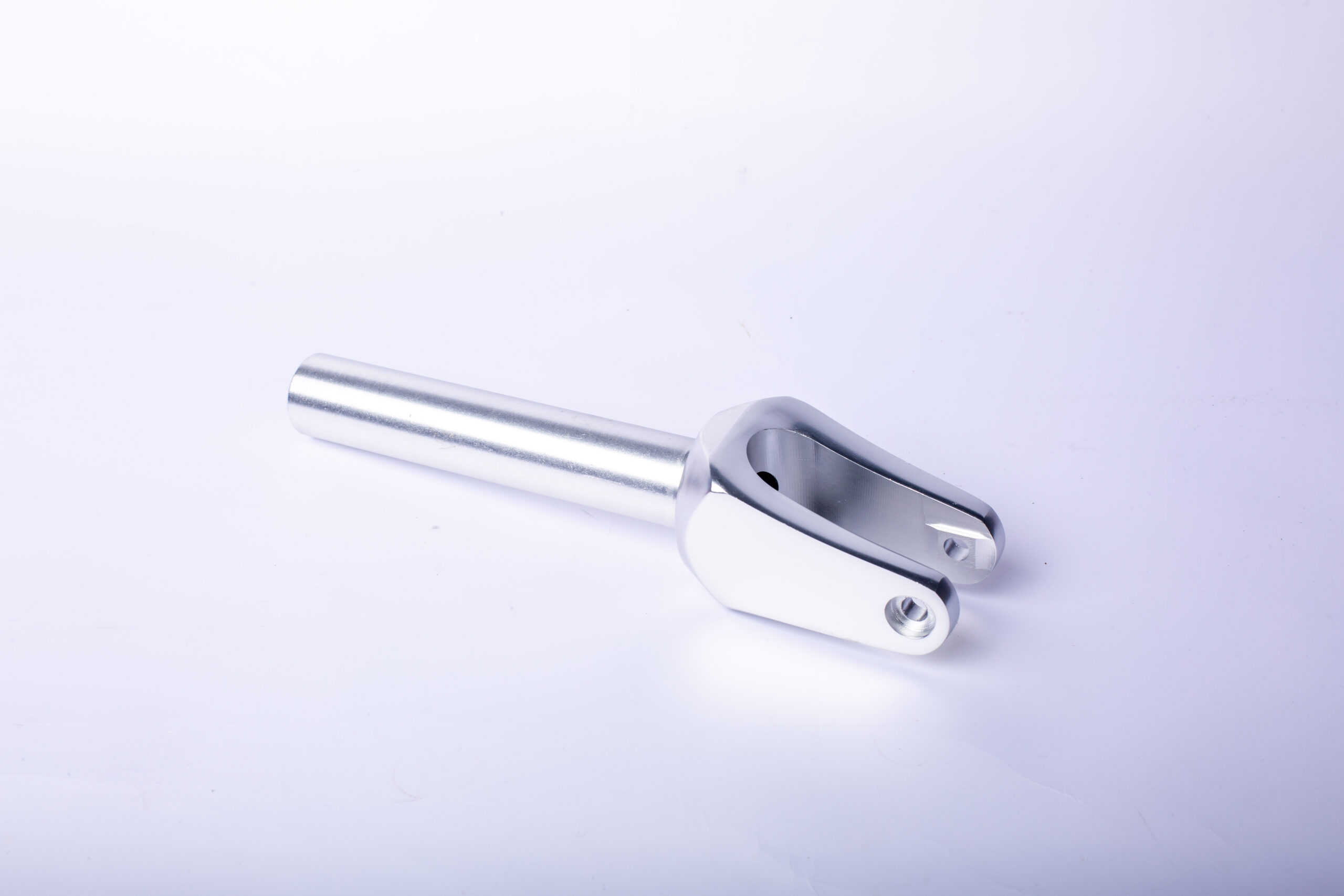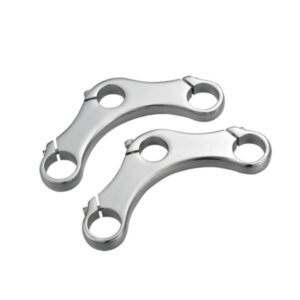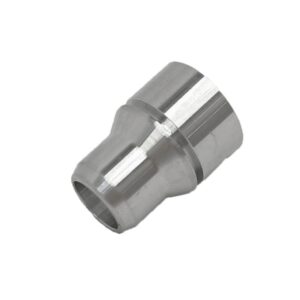As a leading manufacturer and supplier of aluminum forging products, our company has been dedicated to providing high quality and cost-effective solutions for various industries. With years of experience in the forging industry and advanced technology, we have become a trusted partner for clients around the world.
Our company specializes in aluminum forging, a process that involves shaping and forming aluminum alloys through the application of heat and pressure. This technique allows for the creation of strong, durable, and lightweight products that are ideal for a wide range of applications. We offer a wide range of aluminum forging products, including aluminum bars, rods, plates, and custom shapes. Our products are made from high quality aluminum alloys, carefully selected to meet specific requirements such as strength, corrosion resistance, and heat tolerance.
Our state-of-the-art facility is equipped with advanced forging equipment and machinery, as well as a highly skilled team of engineers and technicians. This allows us to produce high precision and complex aluminum forgings with tight tolerances and excellent surface finishes. In addition to our standard products, we also offer custom forging services to meet the unique needs of our clients. Our team works closely with customers to understand their requirements and specifications, and then utilizes our expertise to deliver tailor-made solutions that meet their exacting standards.
We are committed to delivering superior quality products and exceptional customer service. Our quality control processes ensure that each and every product meets international standards and exceeds customer expectations. We also prioritize timely delivery and offer flexible logistics options to meet our clients’ specific needs.
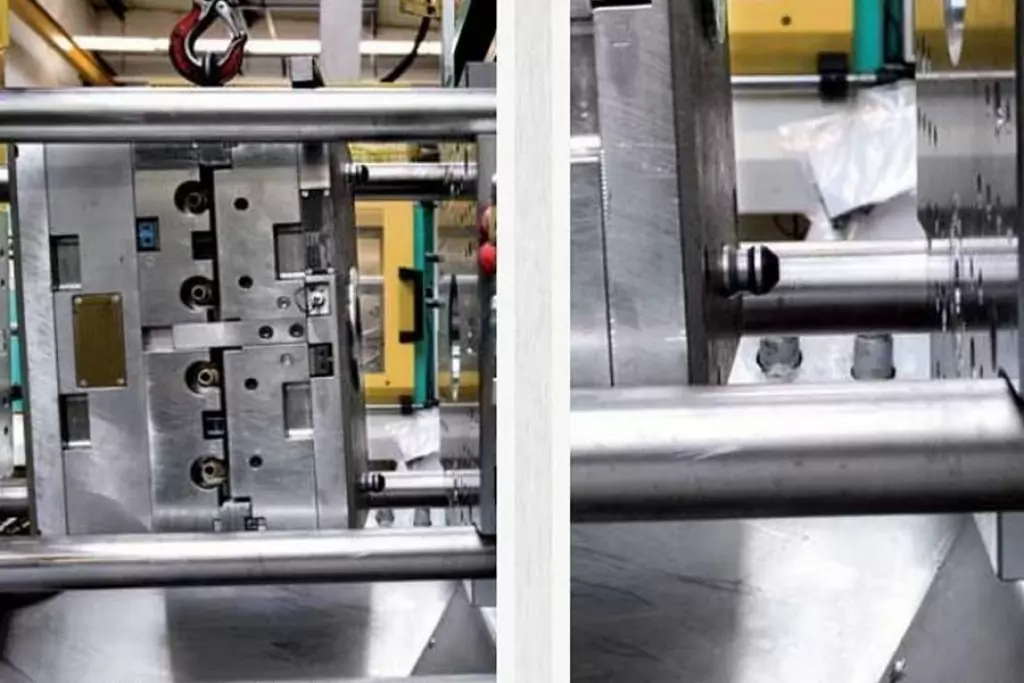
Aluminum forging is the process of shaping and forming aluminum using compressive forces and elevated temperatures. It is a highly versatile and cost-effective method of manufacturing high-quality and complex aluminum parts. The forged aluminum components have excellent strength-to-weight ratios, making them ideal for use in various industries such as aviation, automotive, and construction. The forging process also improves the structural integrity and durability of the aluminum, making it resistant to wear, corrosion, and fatigue. With its ability to produce lightweight, durable, and intricate designs, aluminum forging is a crucial technique in modern manufacturing and engineering.
Aluminum forging is a manufacturing process that involves shaping aluminum alloys into desired shapes through the use of heat, pressure, and specialized tools. It is a popular method for producing strong and lightweight metal parts for various industries such as aerospace, automotive, and construction. By heating aluminum alloys to high temperatures and subjecting them to compressive forces, the material is transformed into the desired shape, resulting in a finished product with excellent strength, durability, and dimensional accuracy. This process also allows for the creation of complex and intricate designs, making it a versatile option for a wide range of applications. With its numerous advantages and advancements in technology, aluminum forging has become a preferred choice for producing high-quality and cost-effective metal components.

Aluminum forging is a specialized process that involves shaping aluminum into desired forms through the application of pressure and heat. It is a widely used manufacturing method for creating strong and durable components for a variety of industries, such as aerospace, automotive, and construction. With its unique properties of being lightweight, corrosion-resistant, and high strength, aluminum has become a popular choice for forging applications. In this process, aluminum billets are heated to a specific temperature, placed in a die, and then compressed by a forging press to form the desired shape. This results in a high-quality piece with enhanced mechanical properties and a refined surface finish. Let’s dive deeper into the world of aluminum forging and explore its benefits and applications.
1.Can aluminum be forged at room temperature?
2.What are the key differences between open die and closed die aluminum forging?
3.How does the shape and complexity of the part affect the feasibility of aluminum forging?
4.What is aluminum forging and how does it differ from other metal forging processes?
5.How is the grain structure of aluminum controlled through the forging process?
6.Can aluminum forgings be welded or joined to other materials?
7.Can aluminum forgings be produced in large quantities and at a fast pace?
8.Is there a specific forging temperature range for different grades of aluminum?
1.Can aluminum be forged at room temperature?
No, aluminum cannot be forged at room temperature. Forging is a process that involves shaping and compressing metal at high temperatures, typically above 700°C (1300°F). At room temperature, aluminum is too brittle and hard to be forged effectively. It requires high temperatures to become malleable and easily shaped.
2.What are the key differences between open die and closed die aluminum forging?
1. Process: The main difference between open die and closed die aluminum forging is the process used to shape the metal. Open die forging involves shaping the metal between two flat dies, while closed die forging involves shaping the metal within a closed die cavity.
- Complexity: Closed die forging allows for more complex shapes and designs to be created, as the metal is completely enclosed within the die cavity. Open die forging, on the other hand, is limited to simpler shapes and designs.
- Material Usage: Closed die forging requires more precise measurements and control, resulting in less material waste compared to open die forging. This makes closed die forging more cost-effective for producing high volume parts.
- Surface Finish: Closed die forging produces a smoother surface finish compared to open die forging. This is because the metal is contained within the die cavity, resulting in less surface imperfections.
- Tolerance: Closed die forging allows for tighter tolerances to be achieved compared to open die forging. This is due to the precise control and pressure applied during the closed die forging process.
- Size and Weight: Open die forging is suitable for larger and heavier parts, as the metal is not confined within a die cavity. Closed die forging is more suitable for smaller and lighter parts, as the metal is contained within the die cavity.
- Cost: Closed die forging requires specialized equipment and tooling, making it a more expensive process compared to open die forging. However, the higher precision and material savings can make it more cost-effective for certain applications.
- Production Time: Closed die forging typically has a longer production time compared to open die forging, as it involves more steps and processes. This can impact the overall lead time for producing parts.
- Strength: Both open die and closed die forging result in strong and durable parts. However, closed die forging can produce parts with higher strength and better mechanical properties due to the controlled and uniform grain structure.
- Applications: Open die forging is commonly used for producing large and simple parts such as shafts, rings, and discs. Closed die forging is suitable for producing smaller and more complex parts such as gears, bolts, and fittings.
3.How does the shape and complexity of the part affect the feasibility of aluminum forging?
The shape and complexity of a part can greatly affect the feasibility of aluminum forging. Forging is a manufacturing process that involves shaping metal by applying compressive forces through the use of dies and hammers. The process is typically used to create parts with high strength and durability, making it a popular choice for producing components for various industries.
When it comes to aluminum forging, the shape and complexity of the part can impact the feasibility of the process in several ways:
- Die Design: The shape and complexity of the part will determine the design of the forging dies. Forging dies are used to shape the metal into the desired form, and they need to be designed specifically for each part. Complex shapes may require more intricate and expensive dies, making the process less feasible for smaller production runs.
- Material Flow: The shape and complexity of the part can also affect the flow of the aluminum during the forging process. Parts with intricate designs or sharp corners may require multiple forging steps to achieve the desired shape, which can increase production time and cost.
- Heat Distribution: During the forging process, heat is applied to the metal to make it more malleable. The shape and complexity of the part can affect how evenly the heat is distributed, which can impact the quality and consistency of the final product.
- Tolerances: Forging is a precise process, and the shape and complexity of the part can affect the tolerances that can be achieved. Parts with intricate designs may require tighter tolerances, which can be more challenging and costly to achieve.
- Material Selection: The shape and complexity of the part can also impact the choice of aluminum alloy used for forging. Some alloys are better suited for complex shapes, while others may be more suitable for simpler designs.
In general, simpler and less complex parts are more feasible for aluminum forging, as they require less time, cost, and resources to produce. However, with advancements in technology and techniques, more complex parts can also be forged with high precision and efficiency. It ultimately depends on the specific design and requirements of the part, as well as the capabilities of the forging facility.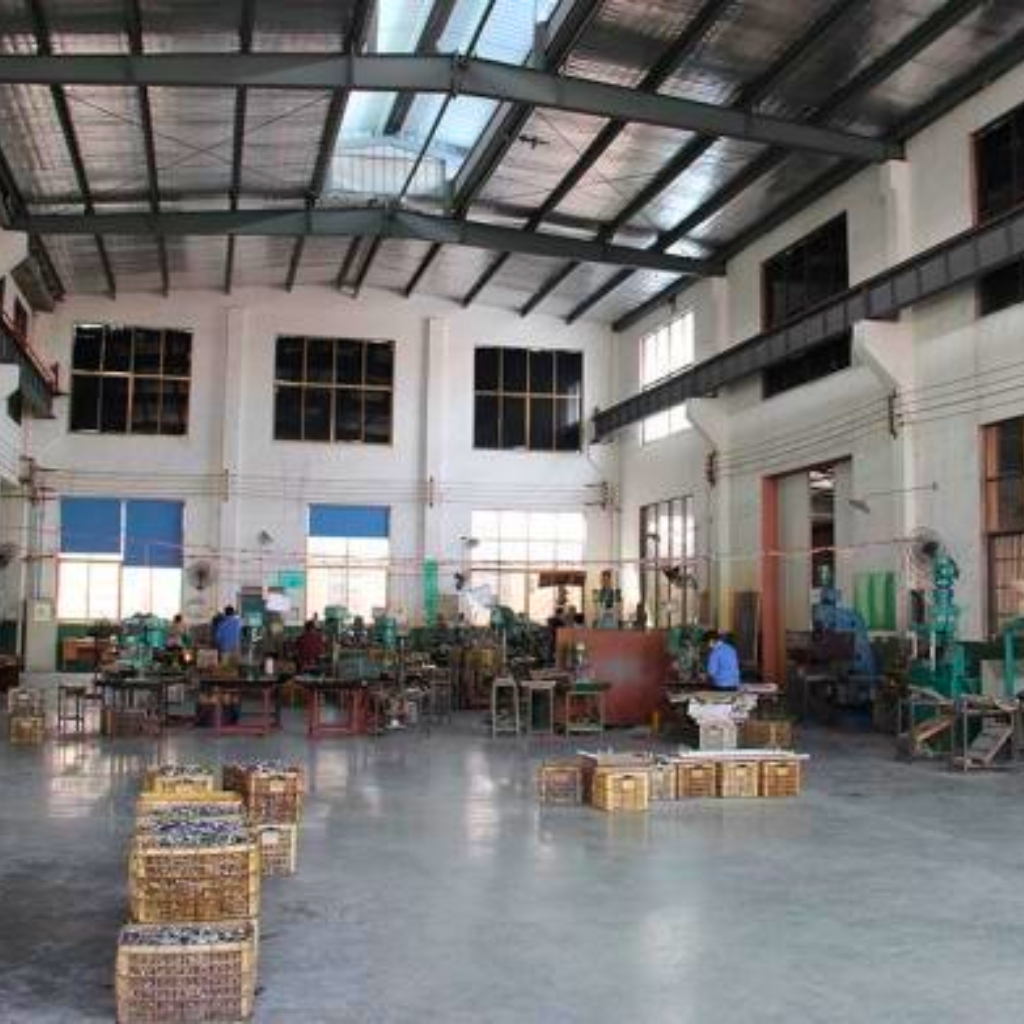
4.What is aluminum forging and how does it differ from other metal forging processes?
Aluminum forging is a metalworking process in which aluminum is heated and shaped using compressive forces. This process involves heating the aluminum to a high temperature and then applying pressure to shape it into a desired form. The heated aluminum is typically placed in a die, which is a tool with a specific shape, and then compressed using a hammer or press.
Aluminum forging differs from other metal forging processes in several ways. One key difference is the temperature at which the metal is heated. Aluminum has a lower melting point compared to other metals commonly used in forging, such as steel or iron. This means that aluminum can be heated to a lower temperature, making it easier to work with and reducing the risk of overheating and damaging the metal.
Another difference is the type of equipment used. Aluminum forging typically requires specialized equipment, such as a hydraulic press or a drop hammer, that is specifically designed to work with the lower temperatures and softer nature of aluminum.
The final product of aluminum forging also differs from other metal forging processes. Due to its lower melting point, aluminum can be forged into more intricate and complex shapes, making it a popular choice for applications that require lightweight and high-strength components, such as in the aerospace and automotive industries.
Overall, aluminum forging is a unique metalworking process that offers distinct advantages over other forging methods, making it a popular choice for a wide range of industrial applications.
5.How is the grain structure of aluminum controlled through the forging process?
The grain structure of aluminum can be controlled through the forging process by manipulating the temperature, strain rate, and deformation rate during the forging process. This is known as thermomechanical processing.
- Temperature: The temperature at which the aluminum is forged plays a crucial role in controlling the grain structure. Higher temperatures promote grain growth, resulting in larger grains, while lower temperatures promote finer grains. By carefully controlling the temperature, the desired grain size can be achieved.
- Strain rate: The strain rate, or the rate at which the aluminum is deformed during forging, also affects the grain structure. Higher strain rates result in smaller grains, while lower strain rates result in larger grains. This is because higher strain rates promote more deformation and break up the existing grains, resulting in finer grains.
- Deformation rate: The deformation rate, or the rate at which the aluminum is compressed during forging, also plays a role in controlling the grain structure. A higher deformation rate results in more deformation and break up of the existing grains, resulting in finer grains.
- Die design: The design of the forging die can also influence the grain structure. A die with a complex shape or sharp corners can cause localized deformation and result in a non-uniform grain structure. Therefore, the die design should be optimized to promote uniform deformation and grain structure.
- Heat treatment: After forging, the aluminum can be subjected to a heat treatment process to further refine the grain structure. This involves heating the aluminum to a specific temperature and then cooling it at a controlled rate. This process helps to break up any remaining coarse grains and promote a more uniform and fine-grained structure.
Overall, by carefully controlling the temperature, strain rate, deformation rate, die design, and heat treatment, the grain structure of aluminum can be controlled and optimized for the desired mechanical properties.
6.Can aluminum forgings be welded or joined to other materials?
Yes, aluminum forgings can be welded or joined to other materials. However, the specific welding or joining method will depend on the type of aluminum alloy used and the material it is being joined to. Some common methods for welding or joining aluminum forgings include:
- Gas Metal Arc Welding (GMAW) or Metal Inert Gas (MIG) Welding: This method uses a consumable wire electrode and a shielding gas to create a weld between the aluminum forging and another material.
- Gas Tungsten Arc Welding (GTAW) or Tungsten Inert Gas (TIG) Welding: This method uses a non-consumable tungsten electrode and a shielding gas to create a weld between the aluminum forging and another material.
- Friction Stir Welding (FSW): This method uses a rotating tool to join two materials together without melting them, making it a good option for joining dissimilar materials.
- Adhesive Bonding: This method uses an adhesive to bond the aluminum forging to another material.
- Mechanical Fastening: This method uses bolts, screws, or other mechanical fasteners to join the aluminum forging to another material.
It is important to consult with a welding or joining expert to determine the best method for your specific application.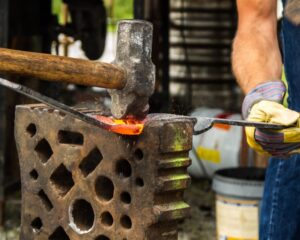
7.Can aluminum forgings be produced in large quantities and at a fast pace?
Yes, aluminum forgings can be produced in large quantities and at a fast pace. The production process for aluminum forgings involves heating the aluminum to a malleable temperature, then shaping it using a die or hammer. This process can be automated and repeated quickly, allowing for large quantities to be produced in a short amount of time. Additionally, aluminum is a lightweight and easily workable material, making it easier to produce large quantities compared to other metals.
8.Is there a specific forging temperature range for different grades of aluminum?
Yes, there is a specific forging temperature range for different grades of aluminum. The exact temperature range may vary slightly depending on the specific alloy and the desired properties of the final product, but generally, the following temperature ranges are recommended for forging different grades of aluminum:
- 1xxx series (pure aluminum): 650-750°C (1200-1380°F)
- 2xxx series (aluminum-copper alloys): 480-595°C (900-1100°F)
- 3xxx series (aluminum-manganese alloys): 480-595°C (900-1100°F)
- 4xxx series (aluminum-silicon alloys): 480-595°C (900-1100°F)
- 5xxx series (aluminum-magnesium alloys): 480-595°C (900-1100°F)
- 6xxx series (aluminum-magnesium-silicon alloys): 480-595°C (900-1100°F)
- 7xxx series (aluminum-zinc-magnesium alloys): 480-595°C (900-1100°F)
It is important to note that the exact temperature range may also depend on the size and complexity of the part being forged, as well as the specific forging process being used. It is always best to consult with a metallurgist or manufacturer for specific temperature recommendations for a particular grade of aluminum.

